Utilizing Planes to Control Mosquito Populations
Vector Disease Control International (VDCI) is proud to own the largest fleet of aircraft in the world dedicated specifically to mosquito management. Aerial applications can be an important component of an integrated mosquito management (IMM) program. Current events, such as the threat of Zika virus (2016), multiple positive West Nile mosquito traps reported, and natural disasters where severe flooding occurs, have created awareness about mosquito habitats that can sometimes be difficult or too large to treat on the ground.
Therefore, having the ability to utilize aircraft can be an effective complement to ground-based activities. Aerial applications may be the only way to break the mosquito breeding cycle in emergency response situations or when mosquito populations are abnormally high.
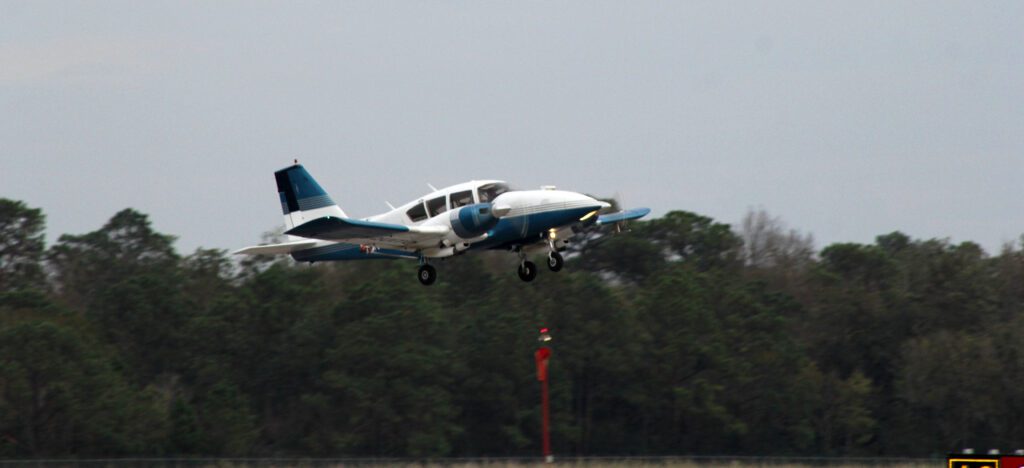
6 Steps Required To Conduct Aerial Mosquito Control
Conducting these missions for municipalities, mosquito abatement districts, military bases, and several other communities where residential properties must be considered, is a highly scientific and advanced process. We will discuss some of the steps required to conduct an aerial application for the control of mosquitoes.
1. Determine the Target Species
Like other aspects of an IMM program, aerial application must be justified by surveillance of mosquito populations. Surveillance allows us to understand not only the number of mosquitoes present but also the distribution of species in a given area. Culex mosquitoes fly at certain times of night (depending on the geography, temperature, and daylight) and are susceptible to certain types of products. An Anopheles mosquito can behave quite differently and might require a different product or application rate. Therefore, knowing the target species allows the manager and applicator to understand which product should be used, at what rate it should be applied, and during what time the application should be made.
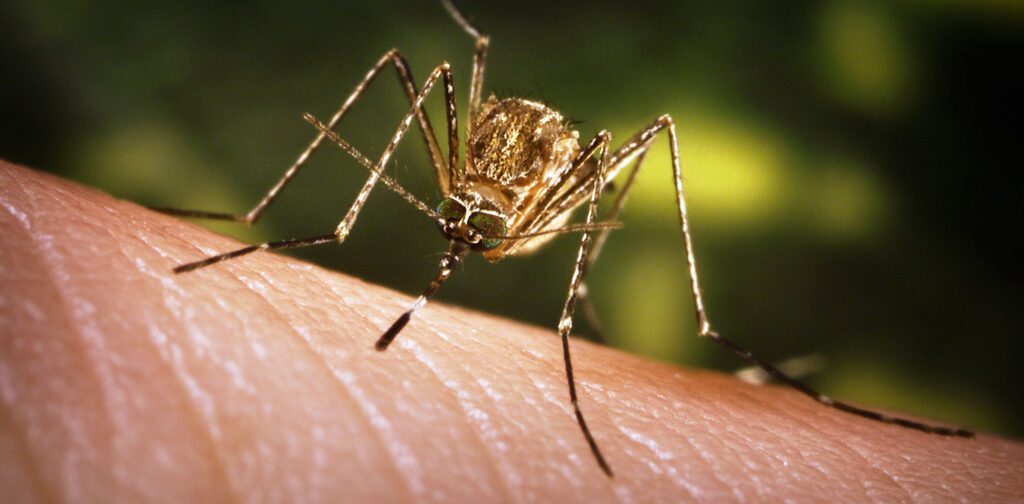
2. Low-Level Waiver, Congested Area Plan, and Regulatory Thresholds
Before an aerial mosquito management mission can begin, the applicator must receive a low-level waiver from the FAA and a Congested Area Plan must be approved for the actual location of the impending aerial application. The FAA prohibits flying over congested areas at low altitudes and aerial mosquito management missions are typically performed at 300 feet above the ground. An applicator must also be sure that National Pollutant Discharge Elimination System (NPDES) permit thresholds have been met in order to justify an aerial application. The most common method to meet such thresholds is simply surveillance using standard trapping techniques. If indeed those thresholds have been met, the public must be notified of the upcoming aerial application. Finally, pilots file a Notice to Airmen (NOTAM). This filing alerts other pilots about the presence of a low-flying aircraft and helps ensure the safety of the application crew.
3. Calibration of Spray Equipment
Calibrating the aircraft’s spray equipment is the law as well as essential for a safe and effective application. Calibration ensures proper flow rates and the application of product to the target area. In addition to flow rates, the second component of calibration is ensuring the correct droplet size. Droplets that are too large will fall to the ground and not kill any mosquitoes, while droplets that are too small will either float away or not harm the mosquito (and perhaps even foster resistance). So it is imperative to have just the right size droplet. Below lists the three most critical pieces of equipment, related to calibration and accurate product deposition, that should be checked prior to each application.
AIMMS Unit: A weather probe that takes real-time weather data and feeds it to the aircraft’s GPS unit, thereby automatically directing the pilot where to fly to ensure a successful application
Micronairs: Rotary atomizer that ensures the proper droplet size is being produced
GPS Unit: Critical to telling pilots where to fly to apply product in the targeted application zone
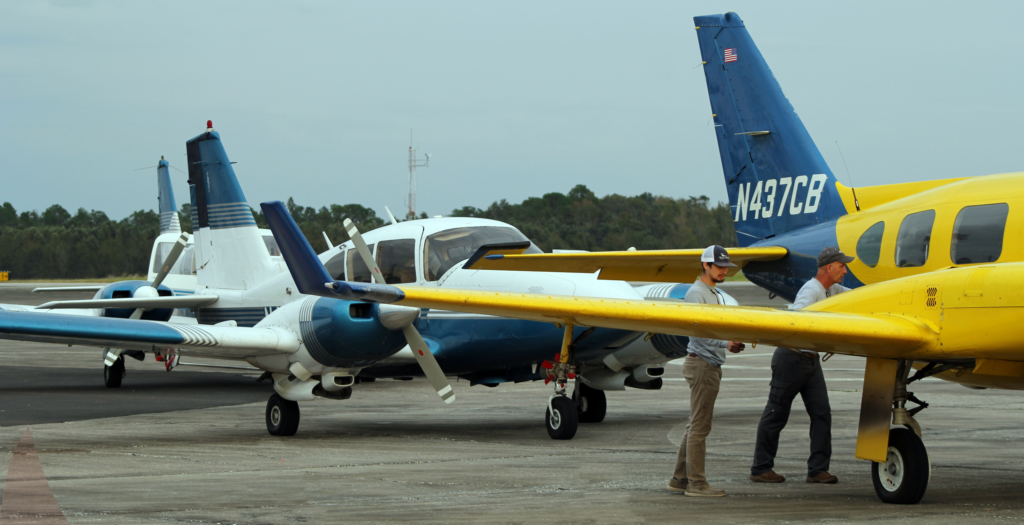
4. Pre Fly the Application Zone
Aerial application is performed at night when mosquitoes are flying. Unfortunately, flying at low altitudes at night can be dangerous if the proper precautions are not taken. During the daytime, each crew should fly the application zone, noting any potential obstacles and recording them in the aircraft’s GPS unit. In the event that these obstacles are not properly lighted, the GPS unit will alert the crew of the presence of the obstacle during the application mission.
5. Conduct the Mission
After all of the above has been completed, an aerial mosquito management mission can commence. The aircraft is loaded with the product to be used and the crew performs the application.
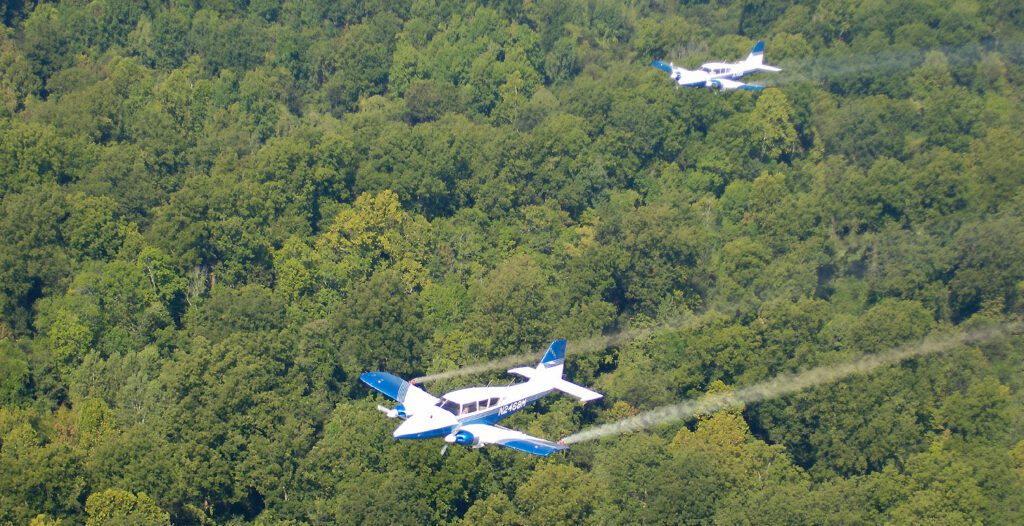
6. Download GPS Data and Produce Application Maps
Once the spray system has been rinsed, and the aircraft inspected after the mission, the crew should download the GPS data and send it to a GIS professional. Once the GIS professional receives the information, an application map is produced and delivered to the manager of the Integrated Mosquito Management program.
The aerial application can be a critical component of an IMM program, particularly when disease transmission has been identified as a risk to public health. Many, many steps must be taken before an airplane is in the air conducting the application. Preparation, technology, and a skilled pilot are all critical to ensuring a safe and effective aerial mosquito management mission.
Contact Us to Learn More About Effective Mosquito Management Strategies:
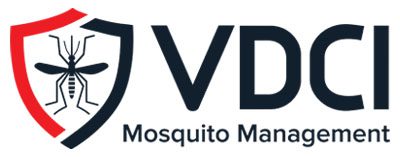 Since 1992, Vector Disease Control International (VDCI) has taken pride in providing municipalities, mosquito abatement districts, industrial sites, planned communities, homeowners associations, and golf courses with the tools they need to run effective mosquito control programs. We are determined to protect the public health of the communities in which we operate. Our mosquito control professionals have over 100 years of combined experience in the field of public health, specifically vector disease control. We strive to provide the most effective and scientifically sound mosquito surveillance and control programs possible based on an Integrated Mosquito Management approach recommended by the American Mosquito Control Association (AMCA) and Centers for Disease Control and Prevention (CDC). VDCI is the only company in the country that can manage all aspects of an integrated mosquito management program, from surveillance to disease testing to aerial application in emergency situations.
Since 1992, Vector Disease Control International (VDCI) has taken pride in providing municipalities, mosquito abatement districts, industrial sites, planned communities, homeowners associations, and golf courses with the tools they need to run effective mosquito control programs. We are determined to protect the public health of the communities in which we operate. Our mosquito control professionals have over 100 years of combined experience in the field of public health, specifically vector disease control. We strive to provide the most effective and scientifically sound mosquito surveillance and control programs possible based on an Integrated Mosquito Management approach recommended by the American Mosquito Control Association (AMCA) and Centers for Disease Control and Prevention (CDC). VDCI is the only company in the country that can manage all aspects of an integrated mosquito management program, from surveillance to disease testing to aerial application in emergency situations.

